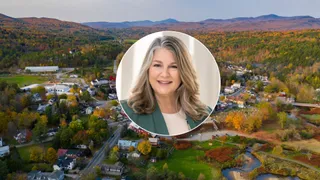
US captive insurance market at a strategic inflection point: Hylant
As it faces an evolving global risk environment, the US insurance market could see 2025 as being a pivotal moment for captive insurance, with a noticeable shift in how companies are approaching and utilising their captives.
That’s the view of Anne Marie Towle (pictured), chief executive of Global Risk & Captive Solutions at Hylant, speaking to Captive International ahead of the Vermont Captive Insurance Association’s (VCIA) annual conference, being held this week in Burlington, Vermont.
“We’re seeing a lot of companies that have existing captives going through what I call a strategic review or a check-up,” Towle explained. “They’re determining what else they can be doing – optimising use, shifting strategies, and developing new goals and objectives for their captives.”
The days when captives were viewed primarily as passive risk management vehicles may be numbered. According to Towle, there’s now an increasing demand for strategic advisory services in addition to traditional captive management. “There’s a big disconnect sometimes. Organisations are getting the day-to-day blocking and tackling, but not the strategic advice,” she said. “They’re asking: what else should we be doing? How can we expand? What should we be thinking about in terms of our risk profile?”
Towle emphasised the importance of analytics and risk assessments in these discussions. Companies are taking a more analytical view of their captives, asking not just what they are doing now, but what they could be doing more effectively. “Absolutely, people are stepping back and saying: we have this tool – how can we really leverage it?” she said.
That sentiment is backed up by industry research. A recent report by AM Best noted an uptick in companies exploring captives as a strategic risk-financing option. Towle agrees. “We're seeing increased utilisation and expansion of captives. It’s the right time to be doing that,” she said.
This shift comes amid global uncertainty and economic turbulence, not just in the US but across international markets. With geopolitical tensions, inflationary pressures, and changing regulatory landscapes, organisations are re-evaluating their insurance programmes – including how captives can help mitigate both traditional and emerging risks.
“We’re kind of at an inflection point,” Towle observed. “Things have been happening in the financial markets and the global marketplace. People are looking at budgets, evaluating their insurance spend – whether that’s employee benefits or property and casualty – and asking: how can we be more strategic in using this tool?”
This more deliberate and considered approach is not limited to newly formed captives. In fact, it’s particularly relevant for older, well-established captives. As the VCIA prepares to mark its 40th anniversary, Towle suggested that this milestone offers an opportunity for reflection and future planning.
“Some of the captives that have been around for a long time can really marry into that theme,” she said. “It’s a good moment to step back and ask: this is what it’s looked like – now what are we doing to plan for the future?”
Towle also pointed out that this more strategic mindset is fuelling new business opportunities for advisory firms. While some companies may begin working with outside experts for advice only, those relationships often evolve. “We may not manage their captive initially, but we get involved strategically, and then that often leads to taking over captive management as well,” she said.
That growth in demand speaks to a broader maturation of the captive insurance industry in the US. Once a niche alternative to the commercial insurance market, captives are increasingly seen as central to long-term risk financing strategy. In particular, captives are being used to address challenges such as rising insurance costs, volatility in property markets, and protection against trade-related exposures, including tariffs.
“Tariffs are one area no one likes to talk about, but it’s another reason companies are saying: let’s leverage this captive,” Towle noted.
As the industry gathers in Vermont to celebrate the history and future of captives, the conversation is clearly shifting from growth alone to long-term value, resilience, and strategic alignment.
“The last few years we’ve been focusing on growth – and that will continue,” Towle concluded. “But the question of what else we can be doing is a critical one. That should be a key theme for the VCIA this year.”
Did you get value from this story? Sign up to our free daily newsletters and get stories like this sent straight to your inbox.

